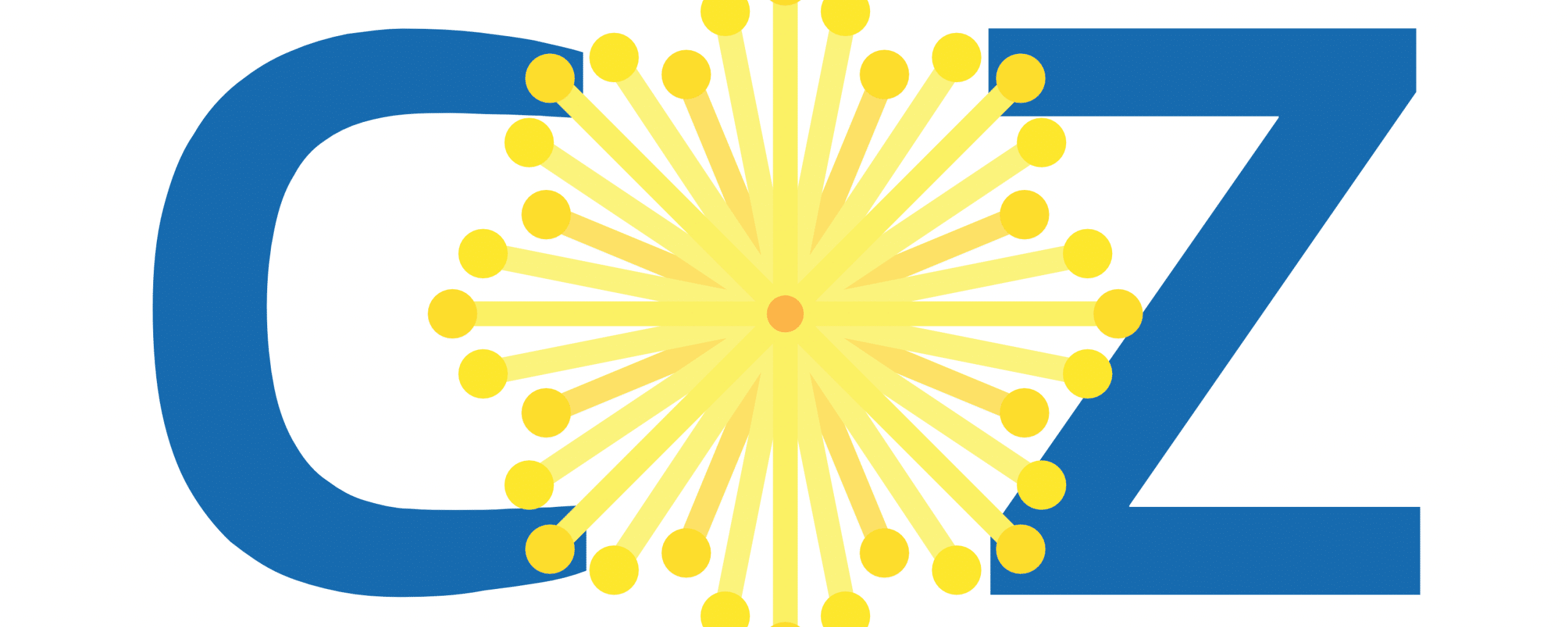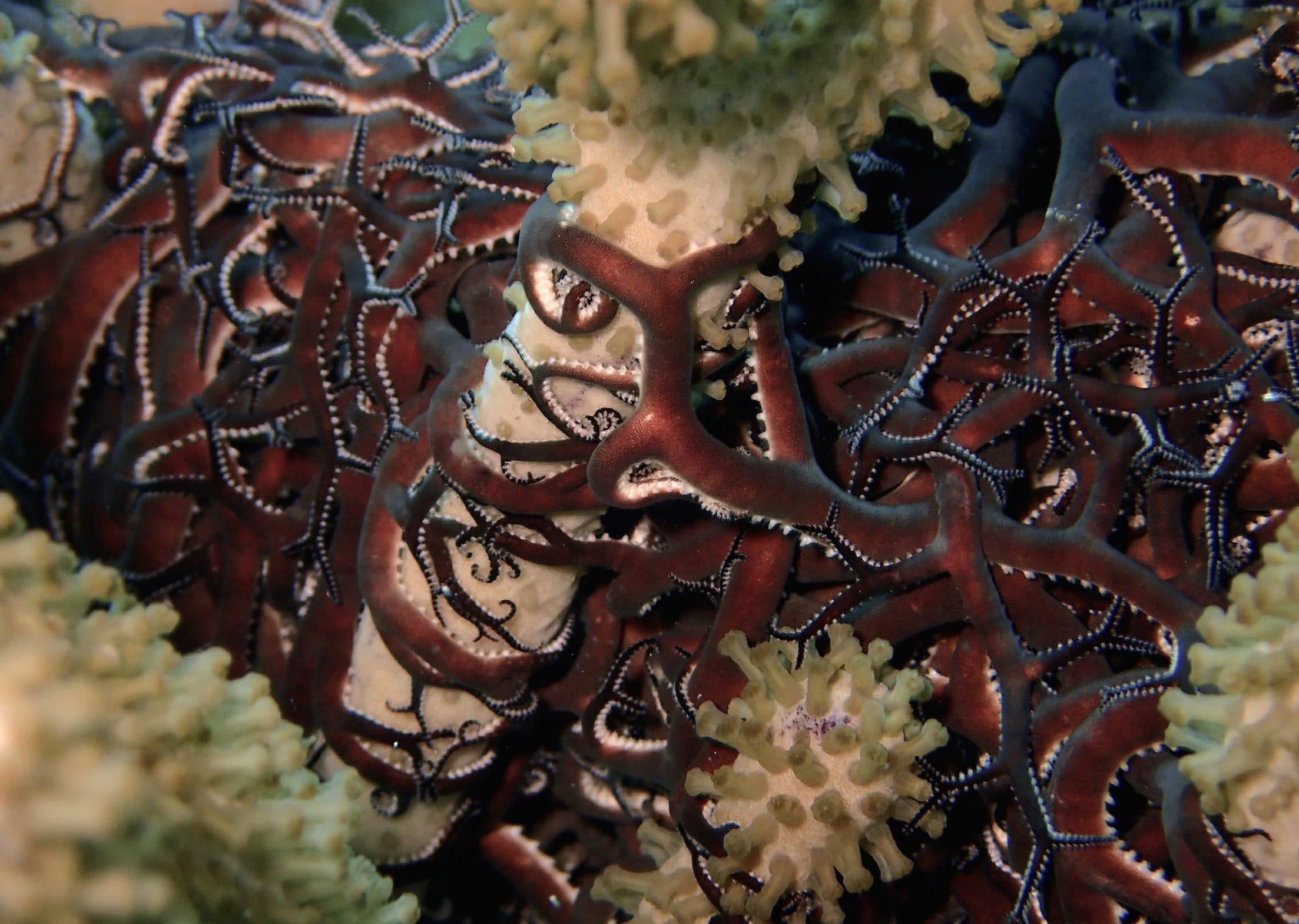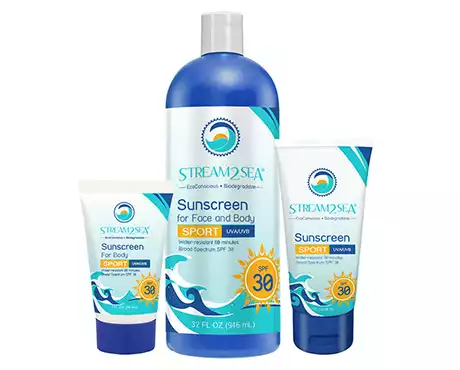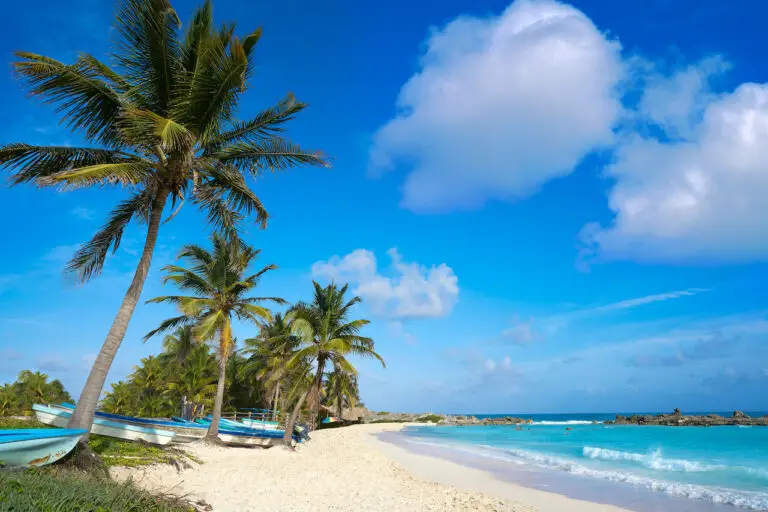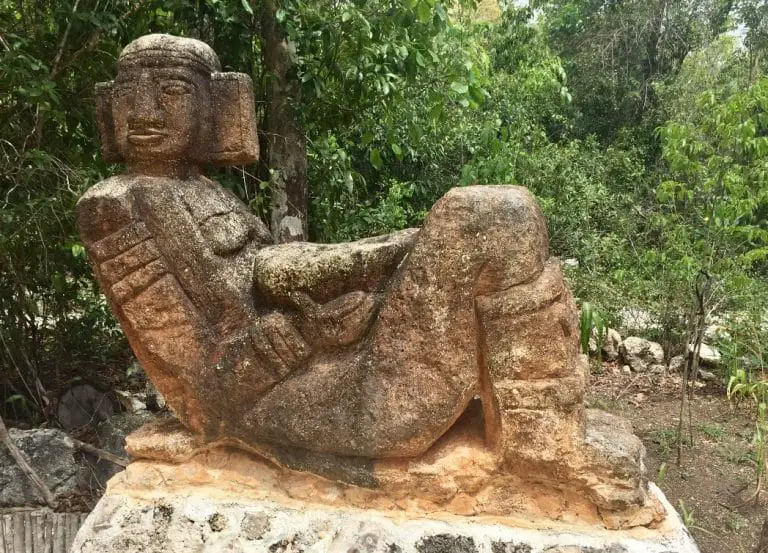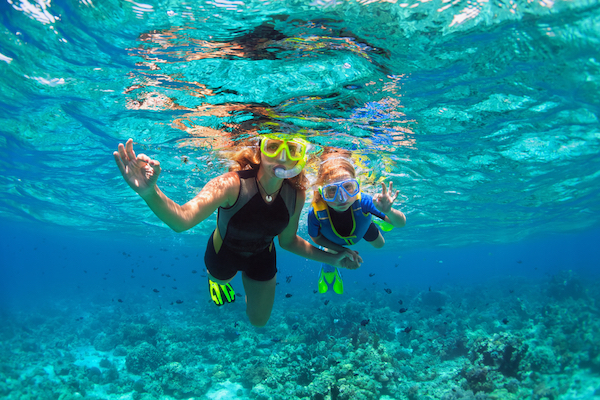Cozumel Marine Life: Sea Stars and Starfish
I had flashbacks to the Upside Down when I caught my first glimpse of a giant basket starfish in Cozumel. A tangle of spiky, tentacled arms and was legs wrapped tightly around a poor little gorgonian coral, and seemed intent on devouring it.
Kinda sinister-looking, right? What was this strange growth? And was it eating (and killing) the gorgonian coral?
Cozumel sea stars are famous, but those are more typical looking cushion sea stars – the ones at the gorgeous El Cielo beach in Cozumel.
But starfish in Cozumel are actually far more common to Cozumel divers and snorkelers, and they come in a few interesting species.
My favorite sea star in Cozumel? First up: the giant basket sea star.
Basket Sea Stars in Cozumel and The Caribbean
It turns out it was not an alien enemy, at all. The branched and curled arms I was looking at were those of a balled-up giant basket star (Astrophyton muricatum) – a cousin of the more typical sea star, or starfish.
Basket stars are marine echinoderms, in the same phylum as brittle stars, sea stars, sea urchins, and sea cucumbers. They have a disk-like body, a combed mouth on the underside of the disk, and five long extended limbs. The basket starfish’s unique limbs proceed to branch off further into multiple smaller arms, all of which have tiny spikes along their edges to catch their typical food source – drifting plankton.
Rather than eating the coral, itself, Cozumel’s giant basket stars use the coral (as well as large sponges and other reef structures) as both a resting and hiding place during the day.
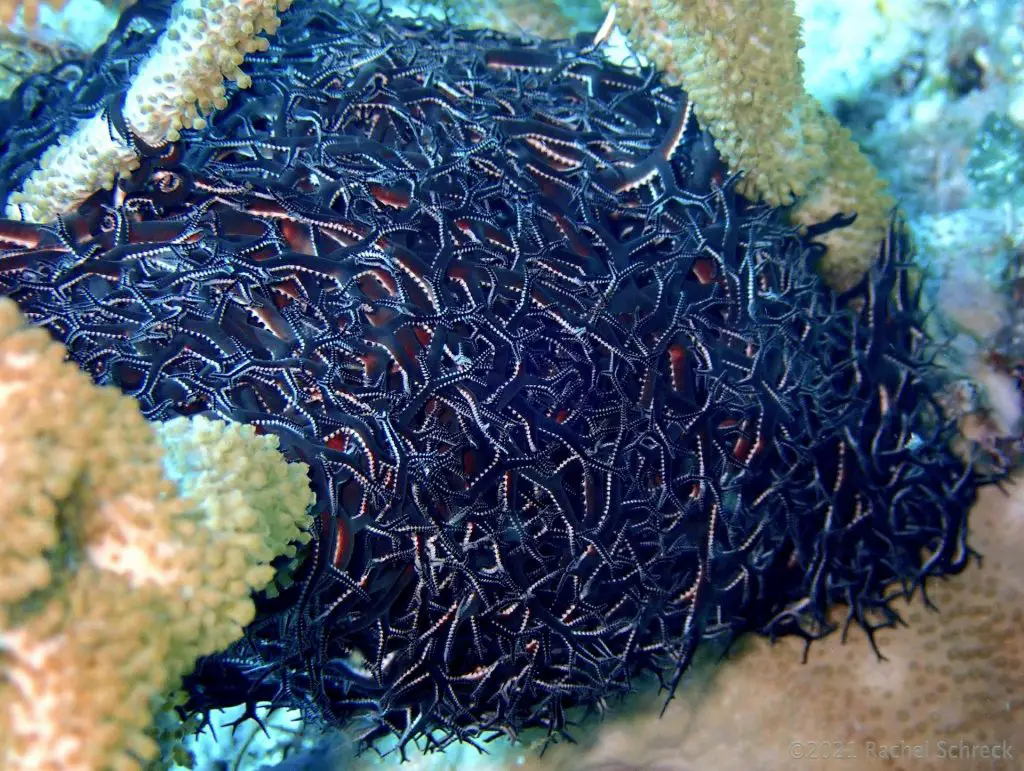
The coral then serves as the basket star’s elevated perch at night, when these branched limbs unfurl to reveal their length and complexity.
The five arms of the giant basket starfish open to create a large “net” for feeding. Tiny prey is caught up in the small spikes along each arm. As they continue feeding, the basket star’s individually moving arms slowly curl in to reach the central mouth opening.
When diving in Cozumel during the day, you could (and surely do) swim right by these cool marine invertebrates, and not even see them.
While the basket stars’ colors don’t tend to blend with the corals or sponges they inhabit, they wrap themselves up quite tightly and are often hiding in plain sight.
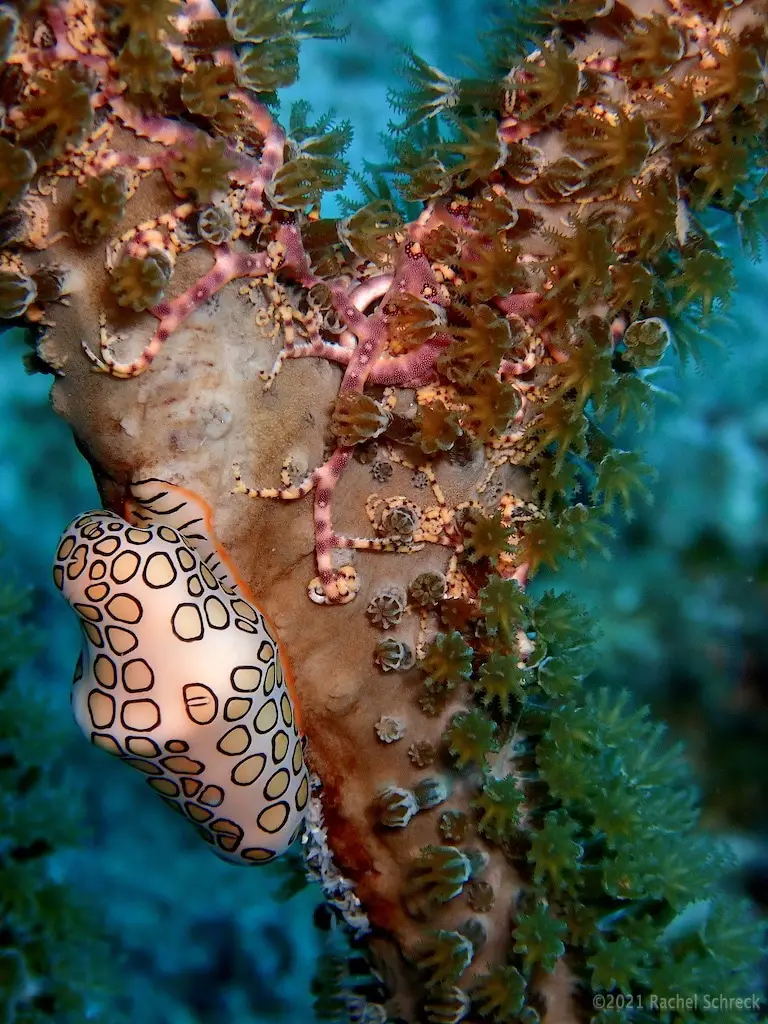
Apparently, this behavior is also used to protect the basket stars from predators, namely fish.
Though if a fish or other predator were to bite off one of the basket star’s arms, they are able to regenerate their limbs.
Regrowth is one cool form of their reproduction, but typically basket stars reproduce by “broadcast spawning,” a process of releasing gametes into the water column, where they will fertilize externally.
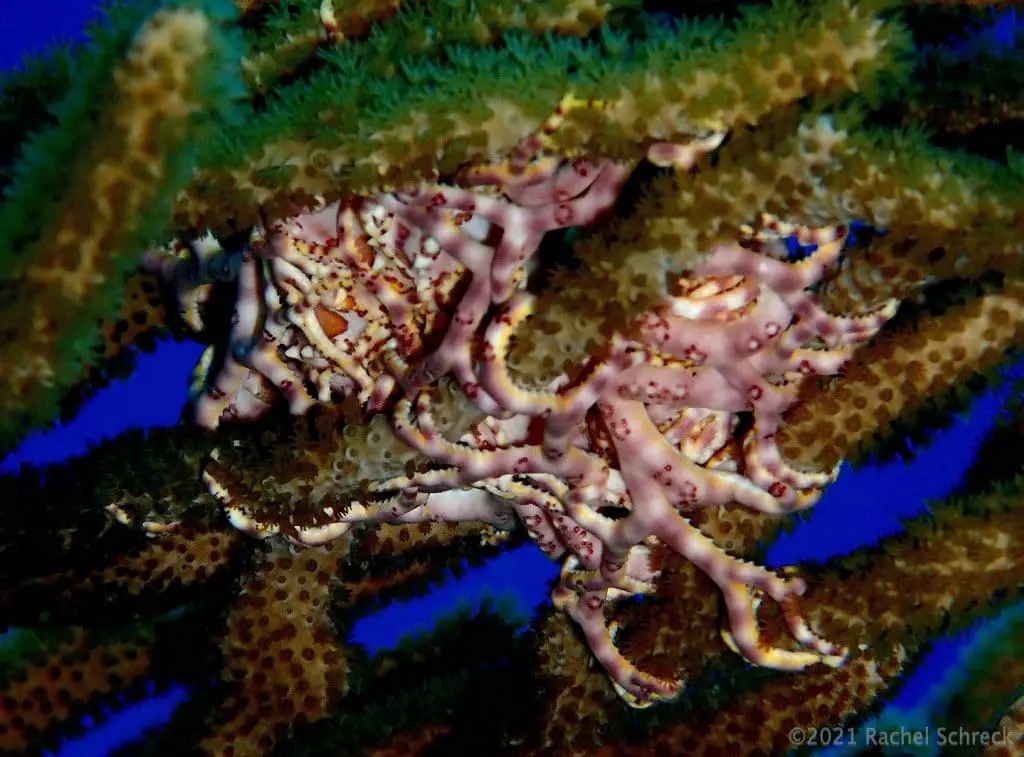
So, yes, still kinda creepy…but also really beautiful. Like many of our favorite coral reef marine animals in Cozumel.
Different Basket Starfish in Cozumel
As I started to see more giant basket stars while SCUBA diving in Cozumel, some research was required.
It turns out I was already familiar with another type of basket star that is frequently found on Cozumel’s reefs: the Sea Rod Basket Star.
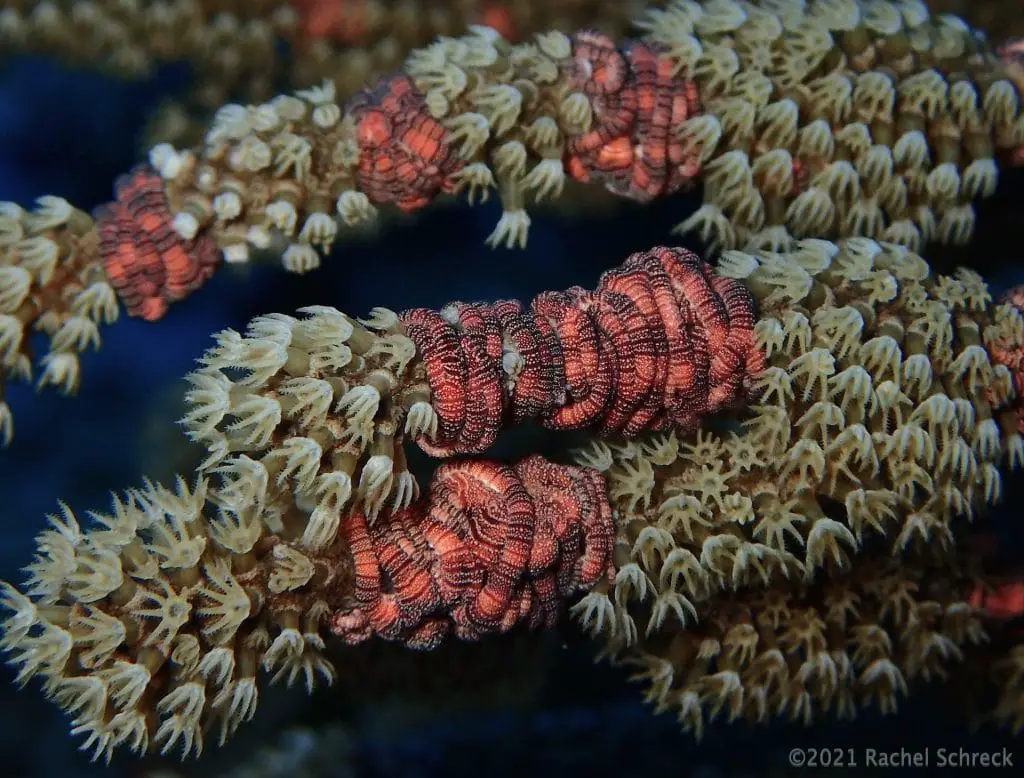
Sea Rod basket stars in Cozumel are almost always found in large clusters and will inhabit the branches of one sea rod gorgonian coral at a time.
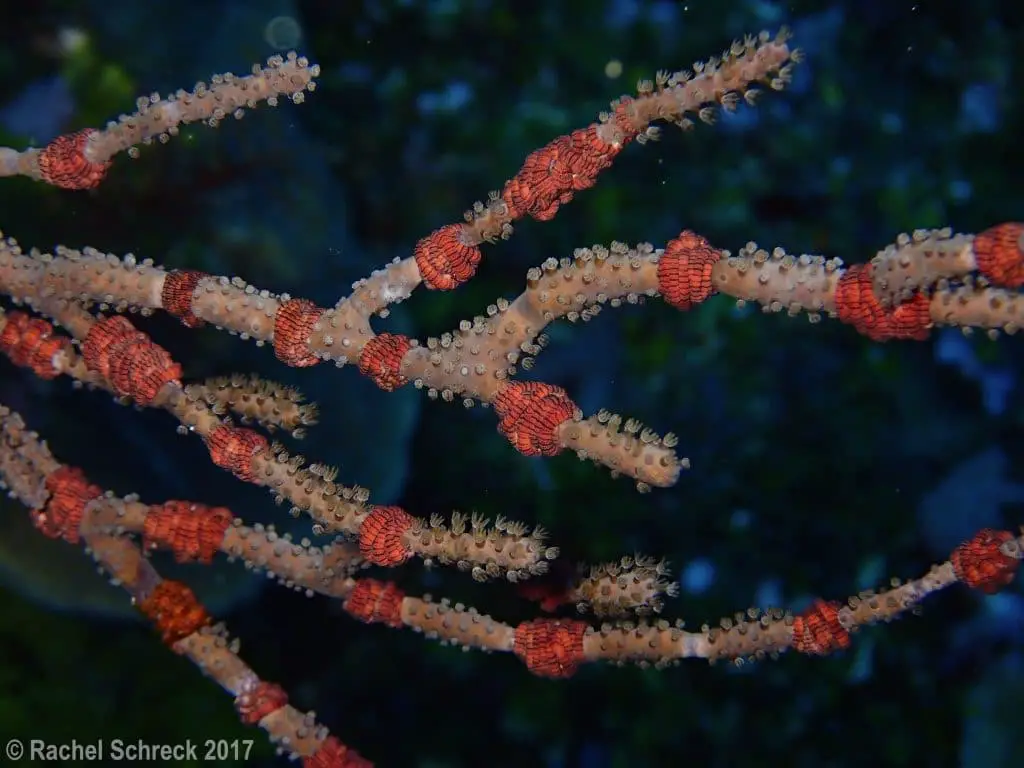
If you love searching for macro marine life when diving in general, then these tiny little critters are some of the coolest to keep your eyes open for while diving in Cozumel.
Sea rod basket starfish in Cozumel are really tiny, with each small red star (as shown above and below) about the size of a plain M&M.
I wouldn’t say sea rod basket stars are easy to find, but once you know what they are and what they look like, trust me – you’ll start seeing them more and more on the many scuba diving sites in the Cozumel marine park.
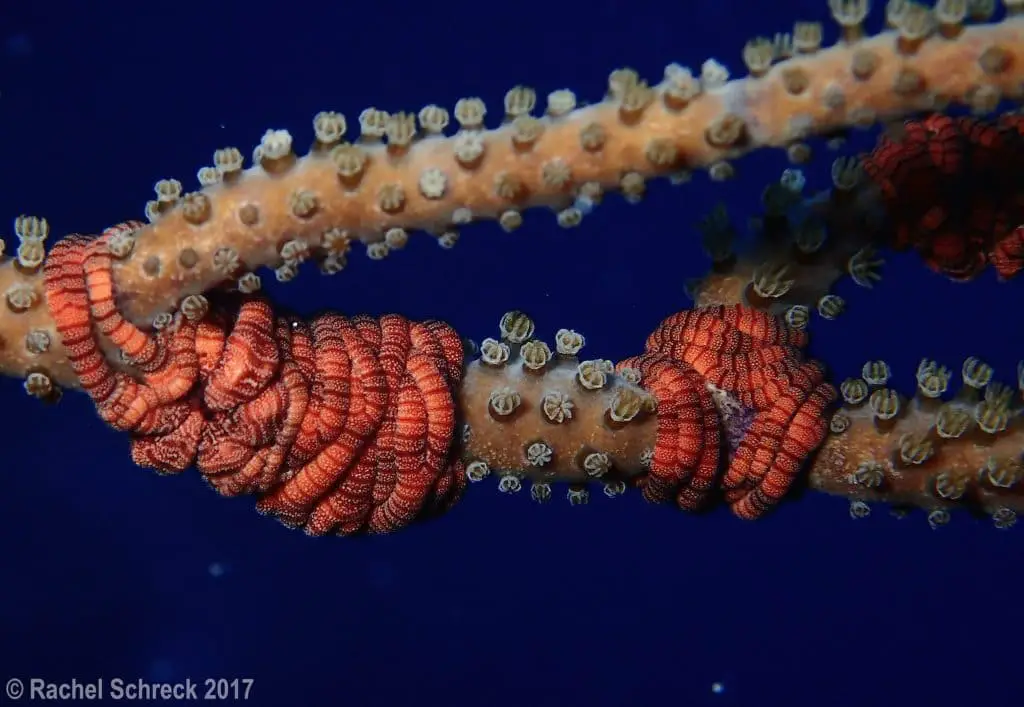
Are There Sea Stars (starfish) in Cozumel?
As mentioned above, basket stars are in the Echinoderm classification, along with sea cucumbers, sea urchins, sand dollars, sea stars, and their most closely related star – and the most plentiful starfish type in Cozumel – the brittle star.

Brittle stars also have central disk-like bodies and five long arms. While their arms move and certainly curl up from time to time, they do not seem to share the basket star’s nocturnal feeding postures.
You’re more likely to find brittle stars clinging to Cozumel’s many vase- and barrel-sponges, or hiding among wide swaths of lettuce coral, only exposing the ends of their skinny, spiky arms. If you’re a diver, you will see brittle stars on every dive in Cozumel.
Cozumel’s Famous Sea Stars at El Cielo
When most people think of sea stars, they usually picture a more typical type – a chunky star-shaped bottom dweller.
Sea stars, also known as starfish in yesteryear (and still known as that today, in many other areas of the world) vary greatly in size, coloration, and markings, but most maintain a simple star shape. Sea stars usually lay flat along the ocean floor or cling to the bottom or sides of various reef corals, sponges, or rocks.
When diving in Cozumel, it is not terribly common to encounter a classic sea star.
Sea stars do live in Cozumel, though, so you might occasionally see one while SCUBA diving.

The example, above, was found while we were diving in Cozumel’s Colombia reef, which makes sense, as the best place to see and snorkel with Cozumel’s famous cushion sea stars is at “El Cielo,” which is right next door to the Colombia reef chain.
Cozumel’s Famous El Cielo Snorkeling Spot
El Cielo (or “sky” and “heaven” in Spanish) is a well-known Cozumel snorkeling and swimming spot that is known to be a sky full of “estrellas,” or the local marine sea stars.
Accessed only by boat, El Cielo in Cozumel is a large off-shore area along the far south-western shore of the island.
El Cielo has crystal clear and light blue water, due to its brilliant white sandy bottom. It is a wonderful place to do a surface interval between two dives or to go swimming or snorkeling. Typically, visitors won’t see a great variety of marine life, but will often encounter the cushion sea stars, as well as stingrays, flounder, conchs, and sand dollars.
Unfortunately, for several years many tourists and operators at snorkeling at Cozumel’s El Cielo would poke, touch, and even sometimes remove the sea stars for the water at El Cielo – most honestly not realizing that taking the sea stars out of water for even a short time does great damage to them.
Sea stars have what is known as a water vascular system, and use seawater as their constant source of oxygen to breathe. If they are not in the water, they cannot breathe. Even a momentary disruption is stressful, or worse.
Sea stars are also relatively delicate – especially their hundreds of “feet” or podia, which are not only used to move but are also the points where oxygen is taken in from the surrounding water. Moving, touching, or damaging the starfish’s podia is far more destructive than it may seem.
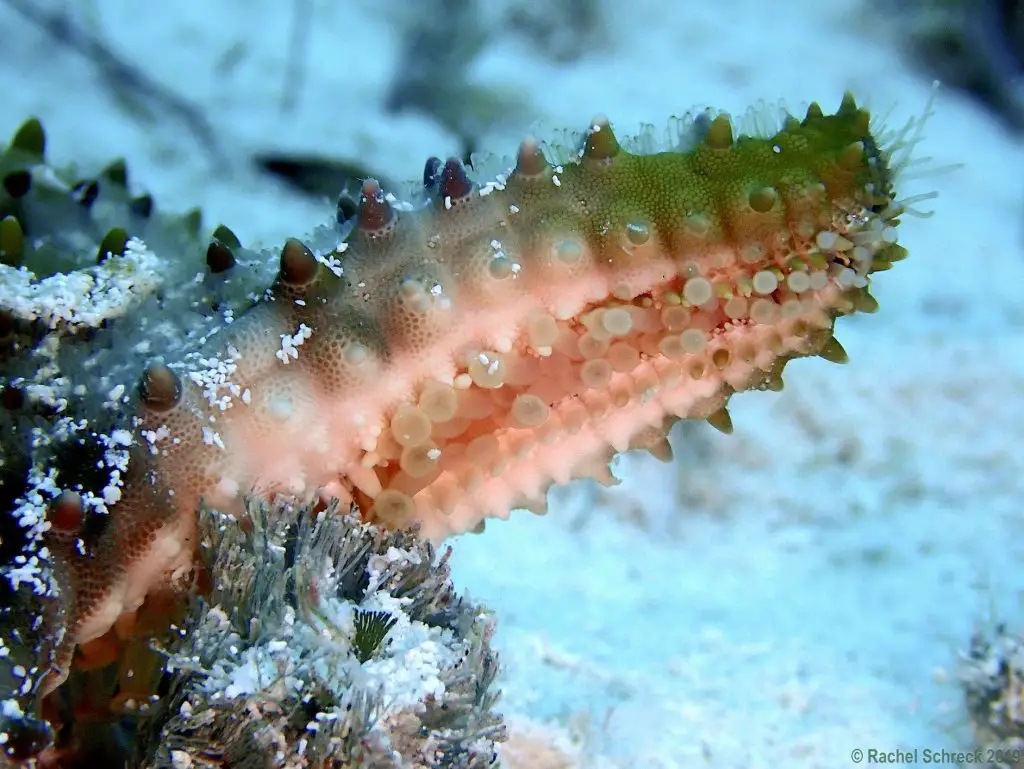
Even when “just a little touch” seems harmless, it often isn’t.
PLUS you can imagine multiplying that “one harmless experience” you have, by the hundreds of thousands of people to visit El Cielo each year, and the starfish quickly become even more sympathetic creatures.
El Cielo is a breeding area for the local species of sea stars, as well as conchs and other animals that are sometimes over-harvested.
The Mexican government agency that protects her natural areas, known as CONANP (Comision Nacional de Areas Naturales Protegidas), has implemented a number of brief and temporary closures of El Cielo as well as popular Cozumel dive sites on a rotating basis during 2020 and 2021 to see if allowing these areas a “break” from boat traffic, sunscreen, and people might show evidence of revitalization.
So if you are coming, ask your hotel about current reef rotations and closings. But don’t worry!
There are loads of great dive sites and snorkeling/swimming spots all around Cozumel Island.
While El Cielo is an undeniably beautiful spot, snorkeling is (honestly…) usually much better in an area with coral and rocky outcroppings, where more marine animals will find food, shelter, and interaction.
If you need recommendations for some of Cozumel’s snorkeling places where you might find lots of local juvenile fish, crabs, Caribbean lobster, rays, and – fingers crossed – a sea turtle, try going to one of the places listed in the snorkeling section of this post, all about Cozumel’s resident sea turtle populations.
- Easy to use
- Easy to pack
- Easy on the wallet
- Durable, waterproof, dustproof
Save 10% - use discount code "COZINFO" at checkout!
